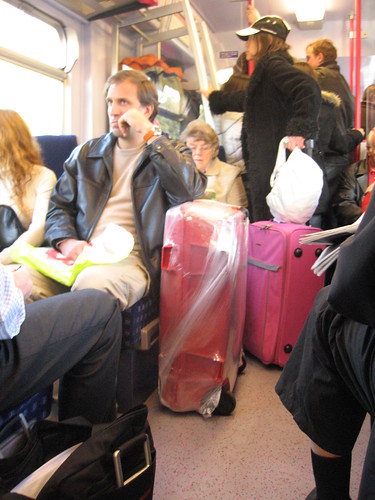
I see that doubts are being expressed about Crossrail, the proposed major east-west route across London. It will link the Great Eastern and Great Western main lines with an underground section running across the middle of London. Trains will run from, Shenfield and Stratford in the east to, initially, Maidenhead in the west, but because of the limited capacity of trains on the GW main line, many trains will turn back at Paddington and it will also be necessary to cut back on the number of freight trains using the GW line. Eventually, the service would continue to Reading, but not before the station and approaches are rebuilt, in about ten years time. There is an option for a branch running south to Canary Wharf and Woolwich, to provide an interchange with South-Eastern services.
The central section will run mostly in tunnel from Stratford, via Liverpool Street and Bond Street, to Paddington. Amongst the benefits are that people will be able to make journeys between the outer suburbs and a variety of central London destinations, without changing. It will also relieve the busy London Underground Central line and the northern half of the Circle line.
Unfortunately, experience with Thameslink, the north-south equivalent, suggests that the project as it stands could have serious drawbacks.
The most important of these, as perhaps regular travellers will know, is that a service across London that joins two main lines is liable to be affected by delays or disruption on either of them and indeed can transfer the disruption from one main line to the other. Crossrail will be vulnerable in exactly the same way. This is called “delay propagation across networks”.
The second is that using a high speed main line for suburban stopping services may not be the best use of resources, especially when it is at the expense of freight operations.
The third is that the lack of capacity means that many trains will have to turn back at Paddington. This has further potential for disruption and means that many passengers will have to change to continue their journey.
The fourth, which again has been the experience with Thameslink (above), is that the trains are necessarily designed for a twenty-minute journey but that passengers may be obliged to use them for much longer trips for which they are not suited due to lack of seats and general comfort.
Kommentarer